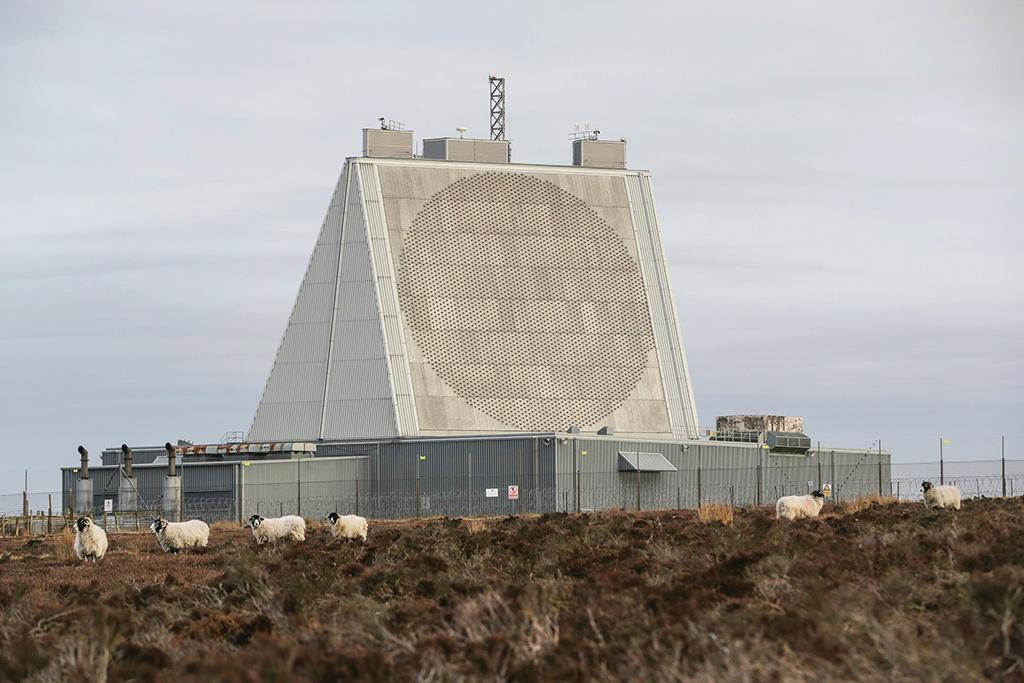
During the Cold War, the space domain was dominated by U.S. and Soviet intelligence-gathering and ballistic missile warning capabilities that few other nations could match or fund. But today, militaries of many more countries are reaching for the stars.
- Some forces may develop niche satellite capabilities
- France wants to develop space-based directed-energy weapons in the 2030s
In 2019, NATO declared space as its fifth operational domain, and in the past year alone, France, Germany, Italy, Japan and the UK have set up military command structures focused on space operations. Australia will join this growing list with the formation of a space division in early 2022.
Most of these countries were already actively making use of the space domain for communications, research and observation, but the formation of these new command structures reflects the growing importance that space is playing in warfare, particularly in the era of “great power” competition.
Now more than ever, countries are dependent on space for essential military and economic functions. A 2017 UK government report into potential disruption of global navigation satellite systems (GNSS) suggested that the cost to the UK economy of a five-day disruption to GNSS signals could cost as much as £5.2 billion ($7.2 billion) and that economic reliance is likely to increase as populations become more dependent on satellite-based communication services such as a those provided by SpaceX’s Starlink or OneWeb.
Perhaps the biggest reason for these new command structures, though, is Washington’s decision to form the U.S. Space Force, putting “the military use of space on the political map and on mainstream media attention in a way that it hasn’t before,” Bleddyn Bowen, a lecturer in international relations and an expert in space warfare, space policy and international relations in outer space at the University of Leicester in England, tells Aviation Week.
Although many of the countries that have formed space commands have hailed the decision as game-changing, Bowen suggests the creation of these military formations is, at least for now, about “rearranging the deck chairs of various defense ministries . . . to give a bit more coherence on space activity.” Instead, he suggests, their primary role will be to ensure that they can maintain points of contact with the U.S. Space Force.
“If there’s a more space-centric structure within the American Pentagon, then your military service, as a dependent ally of the United States needs to be able to communicate with the Space Force as well,” Bowen says.
Furthermore, the creation of new military structures outside the U.S. to focus on the space domain is unlikely to result in significant new defense programs, Bowen expects. Even though the cost of space access is falling, the capital-intensive nature of space activity means that for many of the smaller allies, programs will be of limited scope.
“There could well be all sorts of changes that come 20 years from now,” Bowen says. “But it is not really signaling massive shifts in sort of capability and acquisitions or programs.”
One country that may not fall into this category, however, is France, which already has a strong space presence through its space agency CNES and programs such as the SPOT Earth-observation constellation.
The renamed French Air and Space Force is in the middle of a major mission expansion following the creation of France’s Space Command in the summer of 2019. The expansion includes the construction of a command-and-control center planned to be operational in 2025. The center will unite staff currently scattered across four sites, among them a space-object surveillance facility in Lyon. The idea is to bring together all of France’s expertise in the field—operations support, orbit monitoring or active defense—and grow it, while know-how such as satellite station-keeping is being transferred from CNES.
France also aims to have a full-fledged organization to protect its satellites by the middle of this decade. As planned, it will include an exhaustive range of sensors in orbit and on the ground. Additions and upgrades can be expected.
CSO-2, the second of three Earth-observation satellites with new-generation optical sensors, was launched late last year. France’s first patrol-satellite demonstrator in geostationary orbit is targeted for launch in 2023. An “active defense” system, expected to use space-based directed-energy weapons, is planned to enter service in 2030. The French Air and Space Force’s first virtual exercise for military operations in space—a weeklong simulation of various threats against satellites to test the fledging space command’s reaction—took place in March.
Among the space command’s missions will be watching the Eutelsat 36D satellite. Scheduled for launch in the first half of 2024, it will host a UHF military communications payload ordered by the defense ministry. The payload is to be used by the armed forces, especially special forces units, of France, other European countries and NATO allies. In June, French Armed Forces Minister Florence Parly and U.S. Army Gen. James Dickinson, commander of U.S. Space Command, announced that their cooperation in space will intensify and joint exercises will be organized. Permanent positions were also created for a French officer at U.S. Space Command and for a U.S. officer in French Space Command.

Like France, Italy has also been a long-term user of space-based communications and observation satellites. It formally established its Joint Space Operations Command (COS) in January 2020 to develop greater cooperation in air, missile defense and space situational awareness networks to defend its space-based capabilities. A separate command in Rome operates the country’s Sicral constellation of communications satellites and the COSMO-SkyMed Earth-observation constellation.
The Italian Air Force has separately been taking an increased interest in space activities in recent years through its long-established General Office for Space, and in the coming weeks, three Italian Air Force pilots will fly with Virgin Galactic on the Unity 23 suborbital flight. Their mission will support research into the effects on the human body as they move from Earth’s gravity to a low-gravity atmosphere and will support work on future spaceflight systems and technologies.
The air force has also worked with Italy’s national research council on studies to explore orbiting small satellites by launchers fitted to high-performance combat aircraft. In July, the air force signed agreements with industry and academia on boosting scientific and technological research into commercial spaceflight.
Before the formation of its own space command in July, Berlin was already experienced in military space, having operated a constellation of synthetic-aperture radar reconnaissance satellites called SAR-Lupe for 15 years. Put into orbit in 2006, SAR-Lupe is controlled by Germany’s Strategic Reconnaissance Command, a separate organization that sits under the defense ministry separate from the individual armed services.
Germany’s space command fits well with Bowen’s assessment—defense officials say the command aims to “bundle the previous expertise and capacities” of space and become a central point of contact for multinational partners. The new organization is based at Uedem, near the German-Dutch border alongside NATO’s Combined Air Operations Center for Northern Europe. Officials say the space command is tasked with protecting German Air Force space systems and, if necessary, defending them by monitoring space activities.
“Germany is not pursuing any plans to acquire weapons to combat satellites,” the officials say. “The focus is on education, early warning and communication with international partners such as the U.S., France or [the UK].”
Like France and Germany, the UK has had a constant interest in space, particularly through the use of its Skynet communications system, but has been more dependent than France or Germany on U.S. Space Command. Control of the UK’s space-based systems have largely been the purview of the UK’s Strategic Command, which oversees capabilities used by the UK’s three armed services. It is unclear how much of the Strategic Command control of UK military space assets will transfer to UK Space Command, a structure under the Royal Air Force (RAF) that was established on April 1, opened its headquarters at High Wycombe near London in July and is staffed by personnel from the Royal Army, Royal Navy and RAF.
UK Space Command controls the country’s Space Operations Center and RAF Fylingdales, the site of a phased-array radar that forms part of the U.S. Ballistic Missile Early-Warning System network. The UK government’s uptick in defense spending announced in October 2020 included plans to spend £1.4 billion over the next 10 years on space-based capabilities, including an intelligence, surveillance and reconnaissance constellation.
UK Space Command is also eyeing a series of technology demonstrators that will allow the organization “to see which horse we are going to back into the future,” Air Vice Marshal Paul Godfrey, commander of UK Space Command, said at the RAF Global Air Chiefs’ Conference in July. Some work on space-based capabilities is being led by the UK Defense Science and Technology Laboratory (DSTL) and includes Titania, a free-space optical-communications satellite demonstrator planned for launch in 2023 and the Carbonite-2 full-motion video satellite launched in 2018. DSTL is also collaborating with Airbus on studies for Project Oberon, a cluster of high-resolution synthetic-aperture radar (SAR) satellites.
There is still a lack of clarity, however, on the direction of the UK’s military space ambitions. A long-awaited Defense Space Strategy in the works since at least 2018 remains unpublished. It is likely to call for closer international partnerships, most notably with the U.S. but also through the Combined Space Operations Center initiative, which includes Australia, Canada, France, Germany, New Zealand and the U.S. Negotiations are also underway for the UK to host the U.S. Space Force’s future Deep Space Advanced Radar Capability (DARC) to monitor satellite activity in orbits up to 22,000 mi. above Earth. Three DARC sites are planned with others in North America, while a third could be in Australia.
Elsewhere in Europe, the Netherlands is investing in the space domain as well. In July, Virgin Orbit launched a milk-carton-size nanosatellite Brik II into orbit as part of a demonstration to examine the potential of nanosatellite technology for military uses. Onboard are several experiments relating to communications and signal interference.
Australia looks set to become the next major military to establish a space unit. Formed under the Royal Australian Air Force (RAAF), the space division is expected to start up by early 2022 with air, land and sea personnel. The Australian government says it will begin a “space domain review” to study how space capabilities are “managed, acquired and operated.” Few details have been revealed about the plans, but operational details of the unit are being ironed out, and greater clarity will come when Air Vice-Marshal Catherine Roberts takes over as the inaugural head of the space command in January 2022.
Japan has also flagged its intention to invest in the domain of space. The Japan Air Self-Defense Force (JASDF) established its Space Operations Squadron in May 2020 and will inaugurate a Space Operations Group by the end of this fiscal year.
—With Thierry Dubois in Lyon and Chen Chuanren in Singapore

